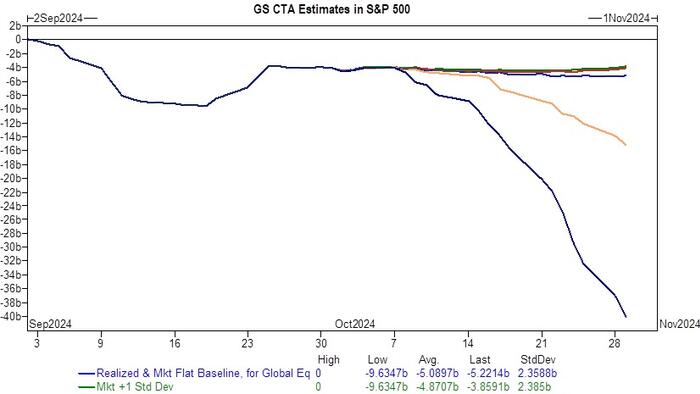Welcome to the concept of “5-dimensional markets,” a term coined by Goldman Sachs macro trader Bobby Molavi to describe the complexity of today’s financial landscape. September marked a tumultuous period, initiating a significant downturn across various sectors, particularly in technology. Investors faced a stark realization as the timelines for artificial intelligence (AI) driving revenue growth became extended, shaking confidence in the tech sector’s immediate prospects. This was further compounded by the narrowness of the U.S. market, where a limited number of stocks—roughly five to seven—constituted around 20% of the global market capitalization. Such a concentration risk led to a brief market correction that elicited concern among traders and analysts alike.
The backdrop of this correction also highlighted a broader concern regarding the sustainability of the ongoing bullish trend heavily reliant on a select few stocks. This “blip” created a ripple effect, bringing uncertainty to investors who had increasingly focused their portfolios on these dominant tech players. The overall sentiment wavered, and many questioned the resilience of the market structure when underpinned by such narrow leadership in growth. As eyes turned to the potential impacts of macroeconomic factors, the interplay of interest rates and inflation further complicated an already intricate trading environment.
Despite the initial panic, the downturn subsided quite rapidly. Stakeholders quickly sought reassurances during a series of discussions and roundtables focusing on AI. These dialogues centered around the transformative potential of emerging technologies, framing them within the context of a broader economic narrative that suggested a forthcoming soft landing. The theme of a rate cut gained traction, presenting a more favorable outlook for consumers and businesses alike, thereby revitalizing investor sentiments. Such narratives have historically played a crucial role in supporting market rallies, illustrating how optimistic projections can evoke a positive feedback loop in trading behavior.
As the market rebounded, the narrative shifted towards a broadening equity rally, implying that investor interest was expanding beyond a narrow band of tech stocks. This development signified a crucial inflection point, where greater participation from various sectors could support a more robust recovery. Investors began diversifying their holdings, looking for value in previously overlooked areas as they reassessed risk and return in light of evolving economic indicators. This transition could foster a more balanced market ecosystem, reducing dependence on a few high-flying tech companies.
The dynamics of a “5-dimensional market” also encapsulate elements such as geopolitical influences, evolving consumer preferences, and the unpredictable impacts of technological advancements. Each of these dimensions interacts with financial metrics, creating a multifaceted environment where traditional investing rules may no longer apply. Consequently, market participants are left navigating a terrain that requires both an understanding of global macroeconomic perspectives and a keen awareness of sector-specific trends driven by innovation. This complexity mandates agility and adaptability to thrive within contemporary investment landscapes.
In summary, the narrative surrounding markets has shifted significantly from a focus on a small group of dominant tech stocks to a more nuanced view of diversified growth possibilities. The volatility seen in September serves as a reminder of the precarious nature of concentrated investments, while the subsequent recovery underscores the power of investor sentiment and the importance of a broader equity participation. As we navigate this decade’s market environment, understanding its multi-dimensional aspects will be crucial for successful investment strategies, shaping a market landscape where adaptability and foresight will define winners and losers.

